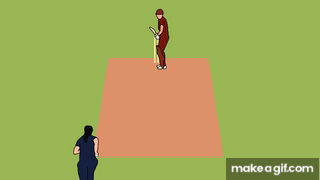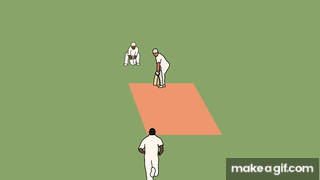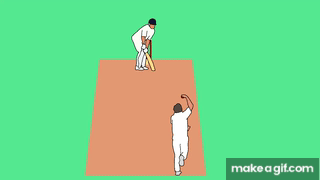Australia wins the World Cup: The dynasty of the women professionals
Looking at how the Australian women got this good, and a couple of other dynasties.
Alana King bowled Sophia Dunkley around her legs in a World Cup final. Leg spin. White ball. Sweep shot. Stumps hit. It was magnificent. Not long after she dragged Katherine Brunt out of her ground and had her stumped. Earlier, it was Heather Knight going out LBW.
Alana King has gone from a nobody to a World Cup winner in three months. But the reason for that - outside her hard work and talent - is the system she has plugged into. You don't have players with the talent of King on the bench without knowing what you are doing.
And because of that, the Australian women have been one of the most dominant teams in cricket history.
So let's take a look at the first real dominant team, the West Indies men. They were about as dominant as any sports team had been over nearly two decades.
And while it's been used to show how they changed the game, and as black excellence, another story needs to be told. For instance, when handing out hall of fame spots to the West Indians, an Australian should also be inducted for his work with the West Indian team.
Dennis Waight was the team's physiotherapist and trainer from 1977 until 2000. It almost completely overlapped with the team being the greatest. His training took a team of amateurs and made them professionals physically.
They were just as talented with or without him. But he kept them on the field, strengthened their cores, ensure they could run in hard and play long innings, and they took care of the rest.
But Waight didn't do it on his own. West Indies cricket went professional through necessity, their players had skills, but their board couldn't pay them, so from Learie Constantine to Garfield Sobers their best players turned to English leagues. Meaning their players were playing cricket all year round like others weren't. Then county cricket became a huge part of the West Indians' professional development.
And then the final part was the Kerry Packer World Series. A rebel cricket league split the game, unified the West Indies team, and importantly, professionalised them even further. That is where they were given Waight.
So now you had a team that grew up on varied West Indies pitches, knew how to play on English and Australian wickets, but were 12 month a year cricketers with someone looking after their physical well-being.
All this came together with their advanced thinking and methods cricket hadn't used before to form one of the most dominant sides sport had ever seen. They did all this as permanent outsiders, which is amazing, but they were the best professionals in cricket at this point.
Who knocked them off and then went on a shorter - but maybe even more dominant - run, Australia. The rebel league in Australia promised professionalism to the Aussies that didn't come straight away. But cricket in Australia had a huge growth in professionalism. Partly inspired by Australian Rules football's professional explosion. Also, to a lesser extent, Rugby league. Then sporting academies became a thing because the government invested in them, and cricket had that. But the real difference was the state and national contracts which came from a robust player union.
Australian players had done well as amateurs in an amateur era, but they exploded as pros versus the unpaid.
Let me explain through two stories, Matthew Hayden and Shane Warne.
Let's start with the king's finger. From 1996 until 2000, Warne's spinning finger almost combusted. At the same time he had massive problems with his shoulder as well. Putting the revs he did on the ball was unnatural, and it caused enormous stress.
In a previous era, Warne would have been on his own - which is what happened to Dennis Lillee - but instead, cricket Australia were there to assist. So instead of having a great start to his career before struggling in the second half, they could get 15 years out of near peak Warne. What happens to Australia's dominance from 00-07 without Warne? Or Jason Gillespie, who would have been lost to the game without a similar professional set-up through chronic injuries.
Then there is the Matt Hayden story. He was a great shield player from almost day one. Breaking records year after year, but failed at the top level on his first few goes. In another era he might have retired, or even just slogged through with weaknesses in his game. But Hayden had access to academies, the best coaching, a professional safety net. And then something else.
He could call up Cricket Australia and ask to go on a tour with a development team to Asia. His breakout with the Australian team was in India.
There are plenty of other stories. Many cricketers who would have gone missing - or been worse - in an amateur system became greats or incredible replacement level players and Australia kicked everyone's arse.
Even the English country professional system, while largely flawed, helped ensure for the first 100 years that England were never a bad team.
And ofcourse that brings us to the Alana King and the Australian women's team, who have had a more dominant period than the Aussie or West Indian men. Their win-loss record looks made up.
I know it, and I still feel like I need to fact check before saying it out loud.
The history of professionalism in woman's cricket is a sombre story. At first there was a successful yet utterly creepy league played in the late 1800s in the UK between two made-up teams. They played, huge crowds came, and then the male founder ran off with the money.
That was all woman's cricket really had as far as professionalism went until the English women became professional in 2014. Until then, women were still deciding between paying their mortgage or playing for their country. Not to mention that at this point most Test nations still did nothing to support their women's teams.
England didn't quite get the professional bump from going pro because Australia and New Zealand did too shortly after. And now it's gone as far as the Brazilian team. Even the Sri Lankans had a boost when they didn't go pro, but instead the armed forces took their players on.
That meant that so many teams had access to a group of professional women, which is great. But not when one team professionalises around 100 women at once through a league. About four times as many as the other teams. And it gets better because there was a boom in women's Australian rules football at that time. Meaning many women who would have been lost to women's sport came flying in now there was a profession there.
England and India could and should have done the same. Instead they've given Australia a six-year head start, but others will catch up.

Many now worry that Australia's success is so full-on that it will stop others even trying to catch up. Teams tried to copy the West Indies, and then they did copy Australia when it came to the men's game. We have the women's hundred; we will probably have the women's IPL, PSL, and maybe even CPL in the next two years. You want to move something in our sport, be this much better than everyone else and watch the others try to catch up.
But let me give you a story from a chat I had with a big bash batting coach on why the women hit the ball further now. He came up with a lot of reasons. Shaking women from the coaching manual, better bats for them, not kids or men's sticks. But he talked about schedules. Before a woman cricketer would go to the gym, but she had to fit them around their work and cricket training. So the thing that often got squeezed out was extra practise and gym.
For seven years, the Australian women have had 100 players from full-time professionals to part-time paid athletes. They have spent that entire time improving.

Alana King has been part of a professional set-up and had access to the best coaching, fitness, nutrition, and support. And because of that, when they called her up only three months ago, she was ready.
Australia is always ready. And because of that, we saw anyone dominate like this. Since Harmanpreet Kaur dumped them from the last world cup, they've gone 40 and two. Others might well catch up, but they have a long way to go. This was as dominant as we've seen a team in cricket. They didn't build up Alana King; they assembled an army of Alana Kings.









Superb article. Very informative. Didn’t know about the Aussie who helped the West Indies team! Thanks for sharing.